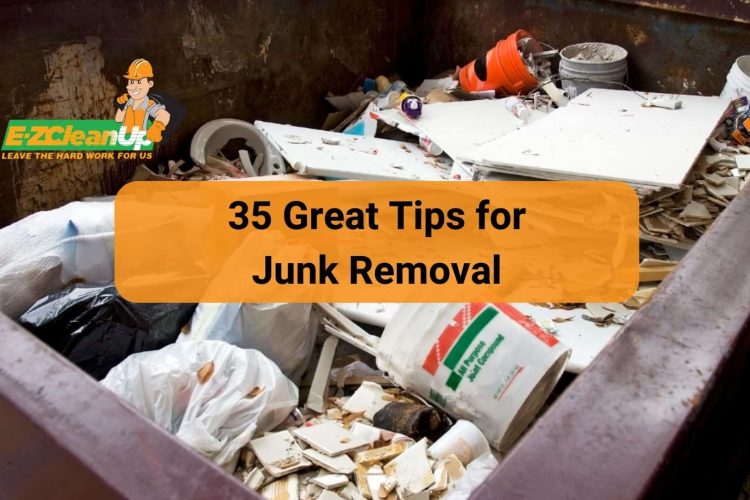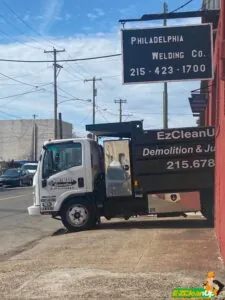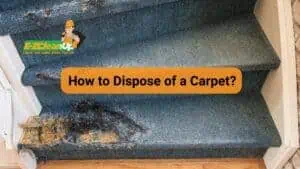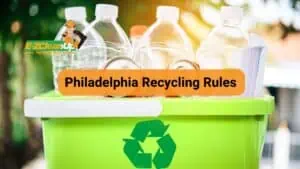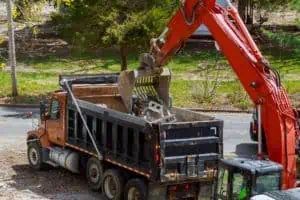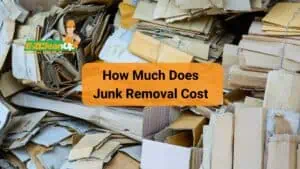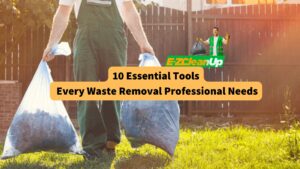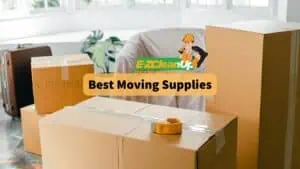The junk removal process should always prioritize safety, efficiency, and adherence to local laws and environmental considerations, whether done professionally or as a DIY project. There are many ways to do it right, but this article will list 35 great tips for junk removal. If you want to learn what they are, read on.
Decluttering Strategies
Tip #1: Set Goals
Begin by setting clear goals for your decluttering project, such as tackling specific areas or decluttering an entire room. Breaking down the process into manageable tasks can make it less overwhelming.
Tip #2: Employ the Four-Box Method
This involves categorizing items into ‘Keep,’ ‘Donate,’ ‘Trash,’ and ‘Unsure’ as you go through each room. This method helps streamline decision-making and ensures every item has a designated place.
Tip #3: Clean One Room at a Time
This strategy is recommended for focused results and a sense of accomplishment. Also, be aware of emotional attachments to items and question whether each item brings joy or serves a purpose.
Identifying Junk vs. Valuables
Tip #4: Expand Your Categories to ‘Keep,’ ‘Donate,’ ‘Sell,’ and ‘Discard.’
Items that you use regularly, have sentimental value, or serve a specific purpose should be considered valuable. In contrast, items that are broken, outdated, or no longer serve a purpose can be classified as junk. This approach helps in making conscious decisions about what adds value to your life and what can be let go of.
Creating a Junk Removal Plan
Tip #5: Plan What to Do
This involves identifying the volume of junk, determining the types of items to be removed, and deciding on the disposal methods.
Tip #6: Hire Junk Removal Services
This can be beneficial, especially for large items or significant amounts of junk. These services can handle heavy lifting, proper disposal, and even cleaning up the area post-removal.
Tip #7: Be Responsible, Whatever You Decide to Do
Be responsible by recycling and donating items wherever possible. If you opt for DIY junk removal, equip yourself with the necessary tools and follow a structured plan to ensure effective and safe removal.
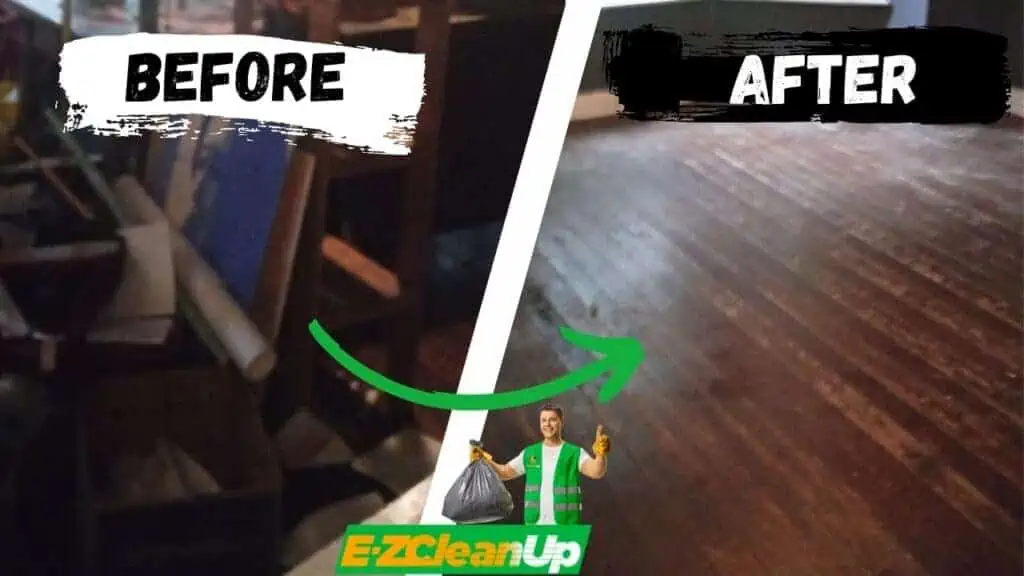
Choosing the Right Junk Removal Service
Tip #8: Assess the Company’s Reputation
When selecting a junk removal service, research local junk removal companies and read customer reviews. These reviews, found on websites like Google and Yelp, provide insights into the company’s reliability, professionalism, and customer satisfaction.
Tip #9: Insurance and Licensing Checks
Ensuring that a junk removal company is fully licensed and insured is crucial. This confirms their legitimacy and protects against any accidents or damages that may occur during the removal process.
Tip #10: Understand the Pricing Structures
Junk removal companies typically charge based on the volume of junk or the time required for removal. Some companies offer pricing per item or by the truckload, with costs varying based on the amount and type of items to be removed. It’s advisable to request detailed quotes from multiple companies to compare prices and services.
Safe Junk Removal Practices
Tip #11: Proper Lifting Techniques
Key tips for proper lifting techniques include:
- Assessing the weight and size of the item before lifting.
- Bending your knees and keeping your back straight when lifting.
- Holding the item close to your body to minimize strain.
- Avoiding twisting your body while carrying heavy loads; pivot with your feet instead.
- Asking for help if an item is too heavy to lift alone.
It’s important to take regular breaks and use back support belts if lifting heavy objects repeatedly.
Tip #12: Ensure Safe Removal of Hazardous Materials
Hazardous materials require special handling and disposal to prevent health risks and environmental harm.
Key practices include:
- Identifying hazardous materials, such as chemicals, electronics, or flammable items, and separating them from other junk.
- Using personal protective equipment like gloves, goggles, and masks.
- Ensuring proper ventilation when dealing with toxic substances.
- Being aware of local regulations for disposing of hazardous waste.
- Utilizing professional junk removal services for complex or large-scale projects involving hazardous materials.
Tip #11: Wear Protective Gear
Protective gear is essential for safety during junk removal, especially when handling potentially harmful materials.
Key gear includes:
- Sturdy gloves to protect hands from sharp edges and debris.
- Protective eyewear and dust masks for dust or chemical exposure.
- Sturdy footwear to prevent foot injuries.
- Protective clothing is necessary when dealing with sharp or hazardous materials.
Using appropriate lifting equipment, like dollies or hand trucks, for heavy or bulky items can also prevent strain and injury.
Sorting and Organizing Junk
Tip #12: Categorizing Junk for Disposal
This involves sorting items based on their nature and the disposal method required. Create different categories, such as items to be donated, recycled, thrown away, or sold. This process simplifies decision-making and helps in identifying the best disposal method for each type of item.
Tip #13: Separate Recyclable and Donatable Items
Identify items that can be recycled, such as paper, plastic, glass, and metals, and separate them from non-recyclables. For donation, consider items in good condition that you no longer use, such as clothing, furniture, books, and toys.
Tip #14: Use Digital Tools for Organizing Junk
Utilize apps and online platforms for inventory management, which can help you list items, categorize them, and plan their disposal. These tools can also assist in scheduling pickups for donations or recycling, and some may offer features for selling items online.

Efficient Disposal Options
Tip #15: Renting Dumpsters for Large Projects
Dumpster rentals offer a range of sizes to accommodate different volumes of waste, from smaller projects to major cleanouts. Common dumpster sizes include 10, 15, 20, 30, and 40 cubic yards, each suitable for various types of projects, such as property turnovers, home remodeling, basement cleanouts, and estate cleanouts.
Tip #16: Cost-effective Junk Removal Strategies
To ensure cost-effectiveness in junk removal, it’s important to assess the volume and nature of the junk and choose the right disposal option accordingly. For smaller projects or when disposing of a few items, junk removal services may be more economical. For larger or long-term projects, renting a dumpster can offer more flexibility and may be more cost-effective.
Handling Specific Types of Junk
Tip #17: Disposing of Appliances and Electronics
Appliances and electronics disposal require careful consideration due to the presence of harmful elements in some items and the potential for recycling. When disposing of electronics, checking with your local trash disposal service is crucial, as they may have specific rules or separate collection programs for electronic waste.
Tip #18: Renting Roll-off Dumpsters
This can be a convenient option for disposing of small electronic devices and other junk. Household hazardous waste facilities are ideal for electronics containing hazardous materials. If your electronics are still functional, consider donating or selling them.
Tip #19: Research Where to Dump Appliances and Electronics
Some manufacturers, like LG and GE, have dedicated recycling programs for their old appliances. Selling appliances for scrap metal is another option, especially for large appliances like washing machines and refrigerators, which contain valuable metals like steel and copper. Professional recycling centers are also recommended for dealing with small and large appliances.
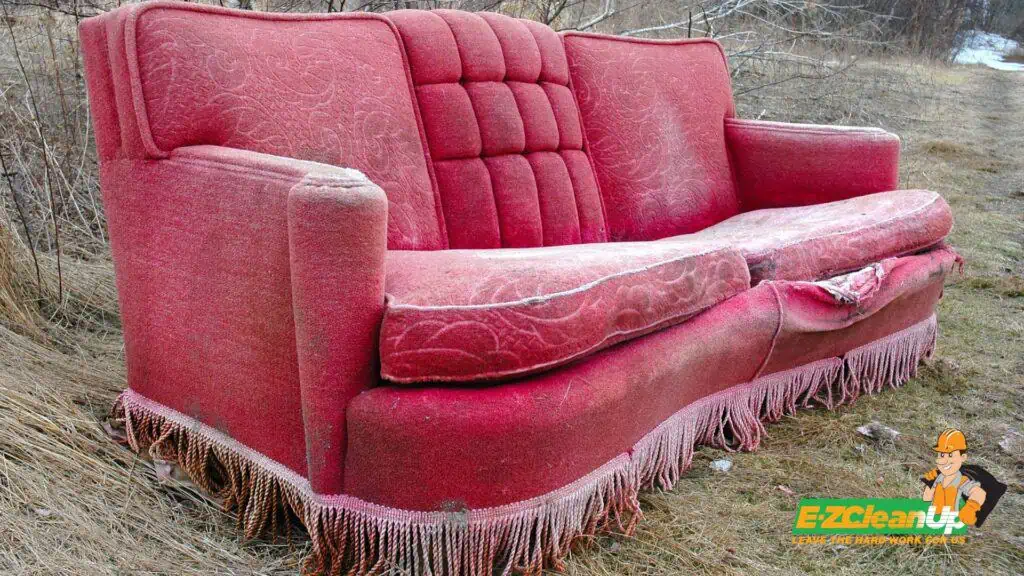
Tip #20: Removing Bulky Furniture
For bulky furniture, try selling it if it’s in good condition. If you prefer donating, local charities often accept furniture donations. Your local trash provider might also offer pickup services for old furniture. It’s important to check with them to see if they can accommodate such items.
Tip #21: Special Considerations for Hazardous Waste
Hazardous waste requires special handling due to its potential environmental and health risks. Items like batteries, paint, cleaning agents, and electronics containing harmful components should be identified and handled with care. Separate hazardous waste from other items to avoid contamination.
Use personal protective equipment when handling such materials, and ensure proper ventilation. For disposal, check your local regulations and consider hiring a reputable junk removal service experienced in handling hazardous materials. Many communities have designated facilities for hazardous waste, and it’s crucial to utilize these for responsible disposal.
Eco-friendly Disposal Methods
Tip # 22: Recycling Tips and Tricks
Recycling plays a critical role in eco-friendly waste disposal. Key steps include knowing what materials your local program accepts, preparing materials by rinsing and flattening, and placing them correctly in your recycling bin.
Tip #23: Donating Items to Charities
Before donating, assess the condition of the items to ensure they are still useful. Many charities accept a variety of goods, including clothing, furniture, books, and household items.
Tip #24: Repurposing and Upcycling Ideas
Repurposing and upcycling involve creatively reusing items to extend their lives and prevent them from ending up in landfills. Common repurposing ideas include turning old t-shirts into cleaning rags, using jars as storage containers, or transforming furniture with a bit of paint or new upholstery. Upcycling not only reduces waste but also allows for personal creativity and can lead to unique, custom-made items for your home or as gifts.
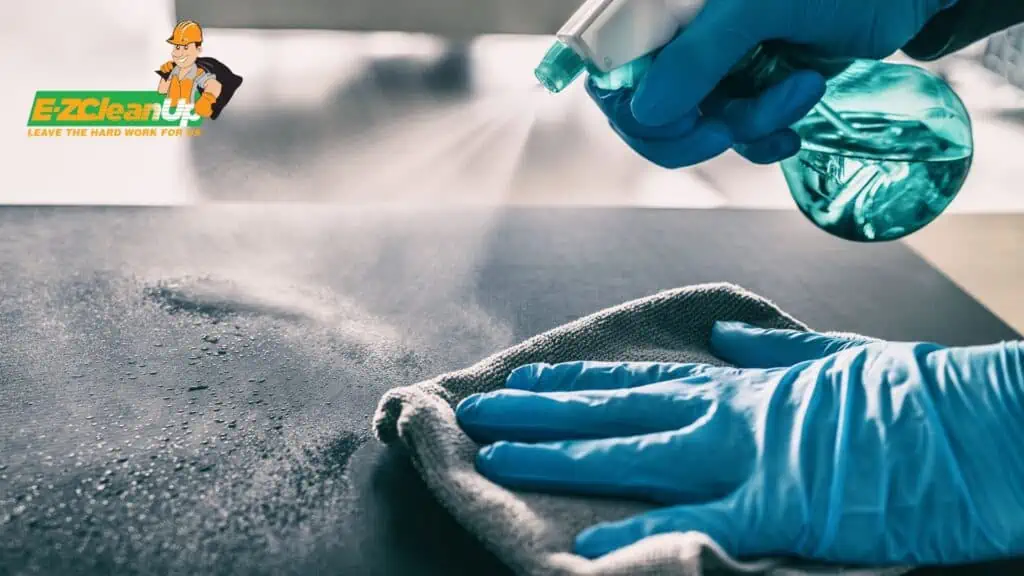
Post-Junk Removal Cleanup
Tip #25: Cleaning and Sanitizing Spaces
After junk removal, it’s essential to thoroughly clean and sanitize the cleared spaces. This includes wiping down surfaces with appropriate cleaning products. Use soap and water or suitable cleaning products for hard surfaces such as counters and light switches.
Soft surfaces like carpets and drapes can be cleaned with products designed for these materials and vacuumed to remove any remaining debris. Using the recommended water temperature and detergent is also advisable for laundering items like clothing, towels, and linens.
Tip #26: Ensuring Property Safety Post-Removal
Ensuring safety on your property post-junk removal involves checking for any sharp objects or hazardous materials that might have been left behind. It’s also important to rearrange the remaining items to prevent any potential hazards like tripping or falling objects.
Tip #27: Final Inspection and Satisfaction
Conduct a thorough inspection of the areas where junk was removed. Check for any missed spots or areas that might need additional attention. This final step ensures that your space is not only clean but also comfortable and safe for use, providing satisfaction and peace of mind after the junk removal process.
Advanced Junk Removal Techniques
Tip #28: Using Technology in Junk Removal
The junk removal industry is increasingly using artificial intelligence (AI) for sorting and categorizing waste materials. This technology enhances efficiency by accurately identifying different types of waste, recyclables, and items suited for donation.
AI-assisted systems use advanced sensors, machine learning algorithms, and computer vision to speed up the sorting process and reduce human error, leading to higher recycling rates and more practical waste management practices.
Tip #29: Innovative Disposal Solutions
The handling of electronic waste (e-waste) has become a significant focus in the junk removal industry. Companies are implementing custom e-waste handling processes, which involve disassembling electronic devices, separating components, and recovering valuable materials like metals and plastics. This approach minimizes the environmental impact and enables the safe extraction of reusable resources.
Tip #30: Understanding the Future Trends in Junk Removal
The future of junk removal looks towards more sustainable practices and the use of technology to streamline waste management. There is an expectation of further advancements, such as the use of drones for waste collection in rural and inaccessible areas and more accurate material identification systems.
The focus on sustainability and technological innovation will continue to shape the industry, making waste management more efficient and eco-friendly.
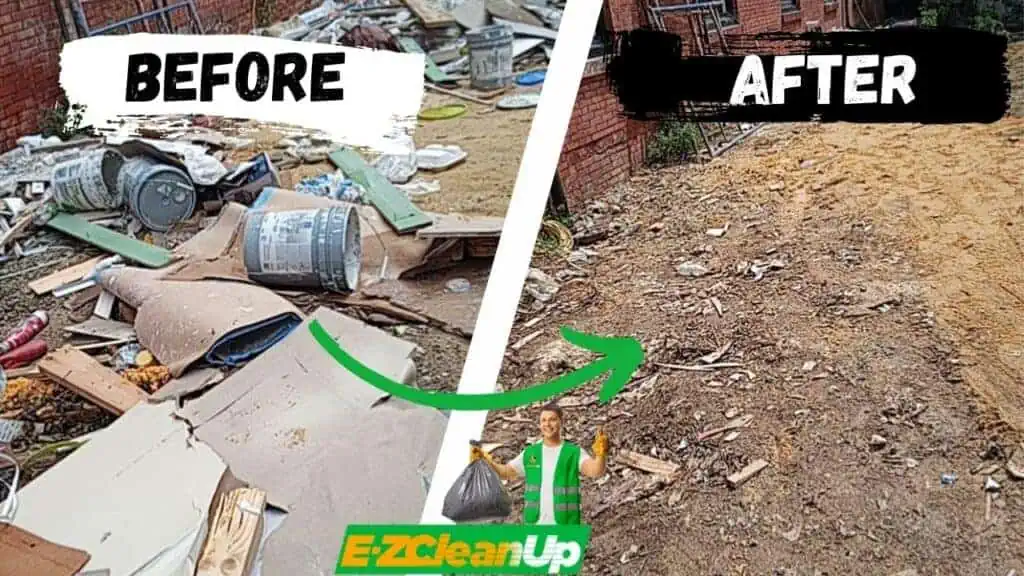
Engaging with Junk Removal Companies
Tip #31: Scheduling and Communication
Scheduling a junk removal appointment involves several steps to ensure a smooth process. Firstly, decide on a suitable date for the pickup, giving yourself enough time to prepare the junk for removal. When booking, whether online or via phone, provide clear details about the types and quantity of junk to be removed.
Tip #32: Evaluating Service Quality
Look for companies with a strong reputation, demonstrated through positive customer reviews and ratings. Consider their range of services to ensure they can handle your specific junk removal needs.
Tip #33: Providing Feedback and Reviews
After the junk removal service, it’s beneficial to provide feedback and reviews. This not only helps the company improve its services but also assists other potential clients in making informed decisions.
Conduct a post-removal inspection to ensure all designated items have been removed and the area is left clean. If any issues arise, communicate them promptly to the service provider.
Cost Management in Junk Removal
Tip #34: Budgeting for Junk Removal
When budgeting for junk removal, consider various factors influencing costs. The national average cost of junk removal ranges between $200 and $250, with variations based on the volume of junk and the type of service.
Tip #35: Seek Competitive Quotes
To find the best deal, gather quotes from multiple junk removal services. It’s essential to ask about additional charges for complex items like appliances, electronics, or hazardous materials. Discounts might be available for off-peak seasons, midweek services, or last-minute bookings.

Experience EZ CleanUp for Expert Junk Removal
After exploring the 35 great tips for junk removal, it’s clear that having the right help makes all the difference. This is where EZ CleanUp steps in. Based in Philadelphia, we extend our expert junk removal services to the surrounding areas.
With EZ CleanUp, your junk removal task isn’t just another job; it’s a mission executed with expertise and speed. Contact us today for a free on-site estimate, and let us help you reclaim your space.

